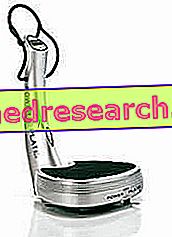What is the Nocebo Effect?
In modern medicine, the term nocebo is used to indicate any harmless substance or medical therapy and without intrinsic therapeutic activity, but capable of triggering negative or unwanted reactions due to the negative value that the subject attributes to treatment.

Another example of a nocebo effect is that of a patient intimidated by the side effects of a certain drug, which has created serious health problems for an acquaintance. When the doctor prescribes the subject an identical drug in appearance but without active ingredients (therefore pharmacologically inert), it is possible that the patient complains about the same side effects reported by the acquaintance. These negative effects cannot be attributed to the intrinsic action of the drug (this being without active ingredients), but must be traced back to a sort of self-conditioning due to pessimism and negative expectations regarding the effects of the false drug.
The nocebo effect contrasts with the more well - known placebo effect, which represents the same phenomenon, but with a positive value (it indicates the curative effect of something that in itself has no effect, but in which the patient nourishes deep healing confidence) .
Again, we have seen that the act of receiving the wrong medical report, which diagnoses a non-existent disease, in many cases leads the patient to complain about the symptoms of that disease, which in reality does not exist. Not to mention the studies on hypochondriacs, in which the ability to become really ill has been ascertained, by dint of imagining oneself suffering from every sort of evil in reality non-existent.
Depends on what?
The nocebo effect is a negative psychosomatic event due to poor confidence in the therapy or in the doctor who prescribed it.
If from the psychological point of view the patient undergoing reacts negatively to the therapy, the so-called anxiety circuit is activated at the level of the central nervous system (and not only), from which it follows a biological response with changes in the levels of neurotransmitters and hormones. One of the most important molecules in this sense would appear to be cholecystokinin (which causes nausea, anxiety, increased sensitivity to pain stimuli and rejection of food). The immune system itself is strongly influenced by the subject's psychological state, not to mention cortisol and other hormones that are closely dependent on stress levels.
Regarding the causes of the phenomenon, most of the studies focused on the placebo effect, rather than on the nocebo. However, even this last one deserves a lot of attention, since some iatrogenic diseases can depend not only on the side effects of the cure itself, but also on the structure in which the therapy is administered and on the same healthcare staff who prescribes it.
In general, we can say that the nocebo effect recognizes causes that are contrary to those that determine the placebo effect; so it mainly depends on:
- poor patient confidence in the treatment that is prescribed for him (which depends largely on the lack of confidence in the person who prescribes it).
- conditioning (linked to previous experiences → for example knowing that that doctor has caused damage to a friend increases the placebo effect);
Being a subjective effect, a nocebo for one subject may turn out to be a placebo for another, and vice versa. From this emerges once again the need for a relationship of mutual knowledge, trust and collaboration to be established between doctor and patient, with full respect for the needs of both.



